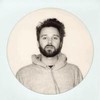Greco's images capture the captivating landscapes of Hideo Kojima's best-selling 2019 game. Photo: Pascal Greco/Death Stranding (Sony Interactive Entertainment Inc.)
"That's Iceland!" - Photo: Pascal Greco/Death Stranding (Sony Interactive Entertainment Inc.)
Greco's accidental discovery sent him down a new creative path. Photo: Pascal Greco/Death Stranding (Sony Interactive Entertainment Inc.)
"You can't just zoom from 25 metres away; you really have to walk over." Photo: Pascal Greco/Death Stranding (Sony Interactive Entertainment Inc.)
Greco's photographs have been collected in a forthcoming book. Photo: Pascal Greco/Death Stranding (Sony Interactive Entertainment Inc.)
In-game photography is just one facet of what's known as post-photography. Photo: Pascal Greco/Death Stranding (Sony Interactive Entertainment Inc.)
While we were all in lockdown, Greco was out on some gruelling virtual hikes, stumbling across artificial beauty spots. Photo: Pascal Greco/Death Stranding (Sony Interactive Entertainment Inc.)
